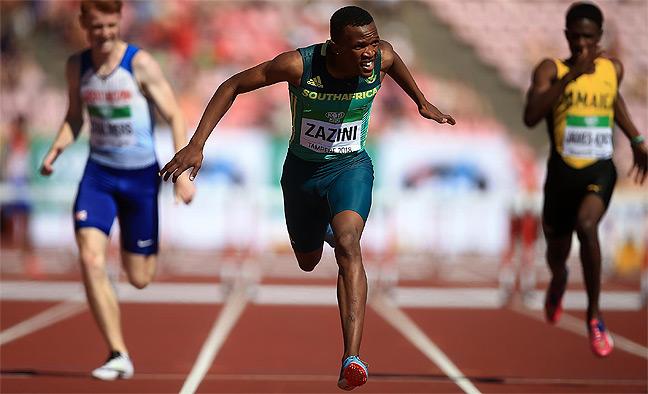In recent debates surrounding fairness and inclusion in sports, calls for athletes to compete as a homogenised group have gained notable traction. However, Sean Ingle’s latest article in The Guardian argues that such proposals risk undermining the fundamental principles of competitive sport. Highlighting the complex interplay of physiology, identity, and fairness, Ingle explores why maintaining distinct competition categories is essential to preserving integrity and ensuring a level playing field for all athletes.
The complexities of athletic diversity and fairness in competition
Athletic competition thrives on the rich tapestry of human diversity-differences not only in physiology but also in background, training, and experience. Attempting to flatten this spectrum into a homogenised group undercuts the essence of sport, where unique attributes often define competitive edge and spectator appeal. Fairness, while a vital principle, is far from a straightforward equation; it demands a nuanced approach that respects both the rules and the natural variation inherent across athletes. Imposing uniformity risks erasing distinctions that create dynamic rivalries and push the boundaries of human achievement.
The reality of fairness in sports must confront several intertwined factors that resist simple categorisation:
- Biological diversity: Variations such as height, muscle composition, and hormone levels impact performance differently across disciplines.
- Technological aids: Advances in equipment and training methods create disparities beyond athlete control.
- Regulatory frameworks: Attempts at categorisation-such as by gender or weight classes-must continuously evolve to stay relevant and just.
| Factor | Impact on Fairness | Example |
|---|---|---|
| Testosterone Levels | Influence on muscle strength | Debates around eligibility criteria |
| Height | Affects reach and stride length | High jump vs. sprint events |
| Equipment | Enhances or limits performance | Carbon-fiber running blades |
Biological differences and why one size does not fit all in sports
In elite sports, biological differences between athletes extend far beyond mere physical stature. Hormonal profiles, muscle composition, and cardiovascular capacity play critical roles in defining individual potential. For instance, males typically have higher levels of testosterone, contributing to greater muscle mass and oxygen-carrying capacity. Female athletes often showcase superior endurance and flexibility, traits shaped by differing physiology and hormonal balances. Attempting to homogenize competition disregards these nuances, reducing complex human variation to an oversimplified standard that neither reflects reality nor ensures fair play.
Key factors that influence athletic performance include:
- Genetic predispositions impacting muscle fiber types
- Endocrine system variations influencing strength and recovery
- Bone density and structural differences affecting injury risk
- Metabolic rates and energy utilization patterns
| Biological Factor | Typical Male Range | Typical Female Range |
|---|---|---|
| Testosterone Levels (ng/dL) | 300-1,000 | 15-70 |
| Muscle Mass (% Body Weight) | 40-50% | 30-40% |
| VO2 Max (ml/kg/min) | 45-60 | 35-45 |
Sporting competition thrives on diversity and specialized categories because these biological realities shape performance in irrefutable ways. Ignoring such distinctions in pursuit of a uniform playing field may erase opportunities, particularly for female athletes who have carved out their space through sheer determination and natural physiological factors. To advocate for a homogenised athlete group is to overlook the science that underscores fairness and equity in sport, potentially disrupting the very foundation of competitive integrity.
The impact of homogenised grouping on athlete identity and performance
Forcing athletes into a homogenised competitive framework disregards the intrinsic diversity that shapes their unique sporting identities. Athletic performance is not solely dictated by physical metrics; it is deeply intertwined with cultural background, personal history, and the nuanced mental resilience cultivated through individualized experiences. When competition is reduced to uniform categories that overlook these factors, athletes risk losing a vital part of their motivation and sense of self, which can lead to diminished performance levels and a fragmented sporting community.
Key consequences of homogenised grouping include:
- Suppression of personal narratives that fuel athlete passion and determination
- Loss of competitive fairness as diverse capabilities are forced into a narrow bracket
- Weakened fan engagement due to a lack of compelling, differentiated stories
| Athlete Identity | Performance Outcome | Team Cohesion |
|---|---|---|
| Strong & Diverse | High & Consistent | Enhanced |
| Forced Uniformity | Variable & Unpredictable | Fragmented |
Preserving inclusivity through nuanced and evidence-based classification systems
Maintaining fairness and inclusivity in sports demands classification systems that are both nuanced and backed by rigorous scientific evidence. Simplistic groupings based solely on broad categories-such as binary gender divisions-fail to capture the complex physiological, hormonal, and genetic factors that influence athletic performance. Instead, multi-dimensional frameworks tailored to specific sports enable athletes to compete on equitable grounds without erasing individual identities or reducing competitors to homogenised labels.
Key elements that such classification systems encompass include:
- Hormonal profiles and their impact on strength and endurance
- Biological markers related to muscle density and oxygen uptake
- Sport-specific performance metrics
- Medical and ethical considerations to uphold athletes’ dignity
| Classification Factor | Influence on Performance | Example Sport |
|---|---|---|
| Testosterone Levels | Muscle mass, recovery speed | Track & Field |
| Hemoglobin Count | Endurance capacity | Cycling |
| Body Composition | Agility, strength-to-weight ratio | Gymnastics |
Key Takeaways
In sum, while the push for inclusivity in sports is both necessary and commendable, calls to homogenise athletes into a single, undifferentiated category risk oversimplifying complex biological, social, and competitive realities. As Sean Ingle argues, preserving fair competition requires nuanced policies that recognise diversity rather than erase it. The debate over how best to balance equality, fairness, and respect in athletics is far from over, but any approach must be grounded in careful consideration rather than blanket measures that could undermine the integrity of sport.





